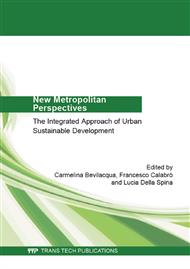p.142
p.149
p.157
p.165
p.171
p.177
p.187
p.193
p.198
Open Source Architecture for "Nuovo CEP"
Abstract:
The Open Source Architecture (OSArc) is a new collaborative way to design common and shared areas at an architectural level, but also at an urban and technological level, etc.. It allows you to participate in the design phase both practically, with your technical contributions, and actively, with constructive criticism and intelligent and innovative suggestions. We thought of using this new design paradigm to make the Nuovo CEP project feasible and economically sustainable through the cooperation of both professionals and non-professionals (i.e. inhabitants, students, etc.). Nuovo CEP is a project, which aims to redevelop a suburban neighbourhood and transform it into a mini smart solar city. The OSArc for Nuovo CEP is realized by means of a wiki website where all interested users can register and insert their contributions together with others members of the community. In this paper, we are going to explain the Nuovo CEP project and its objectives, which will be a guideline and an inspiring source for users contributions. Then we will explain the wiki website structure used to implement the platform for the OSArc.
Info:
Periodical:
Pages:
171-176
Citation:
Online since:
June 2014
Authors:
Permissions:
Share:
Citation:


